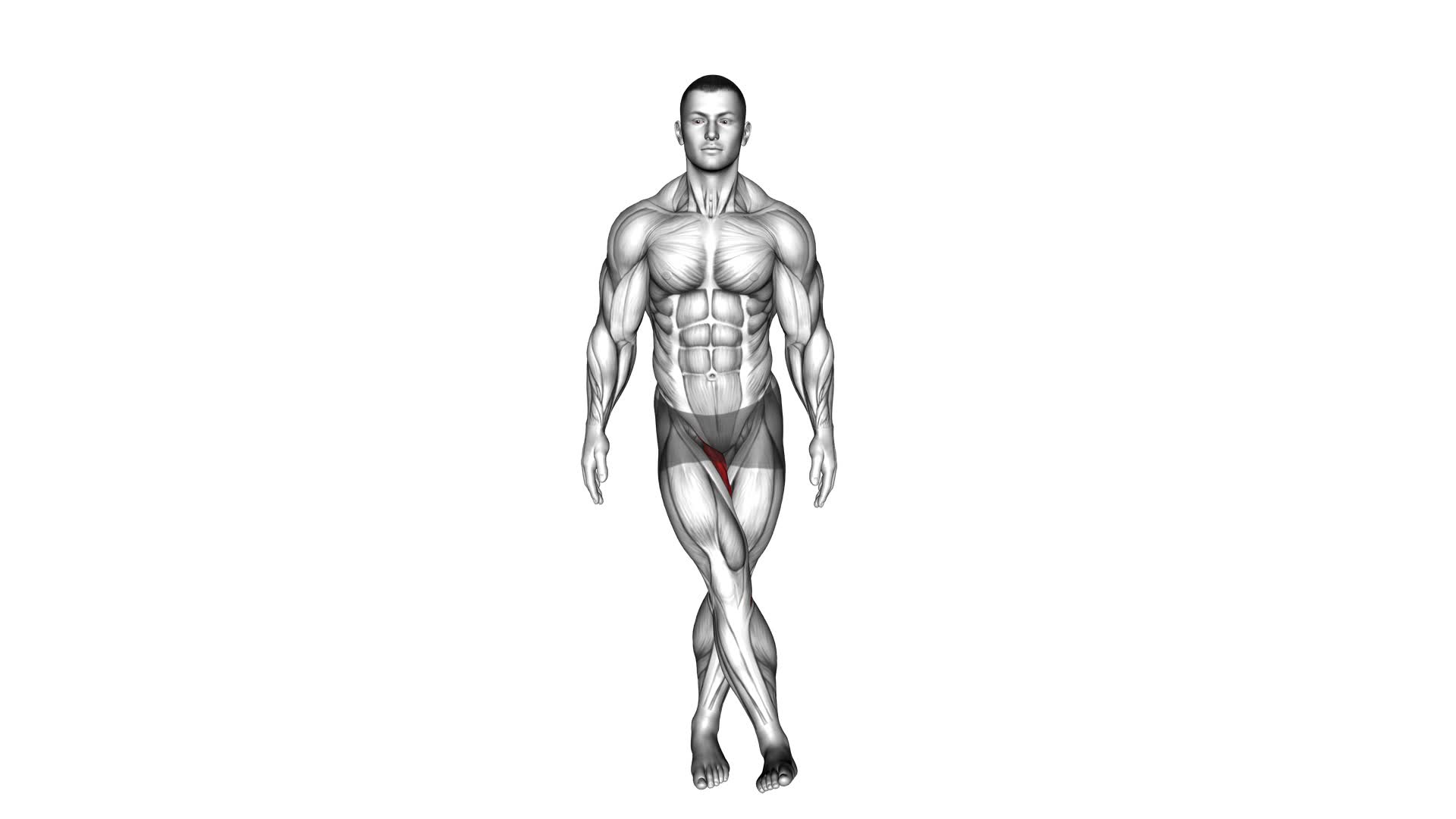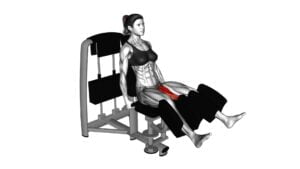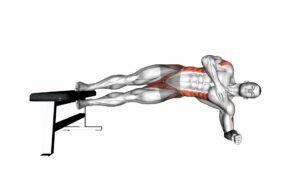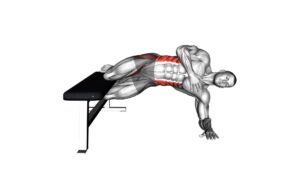Standing Hip Adduction (VERSION 2) – Video Exercise Guide & Tips

Are you looking to strengthen your hip muscles and improve your overall lower body strength? Look no further than the Standing Hip Adduction exercise.
Watch This Exercise Video
In this video exercise guide, we'll show you the proper form and technique for performing this exercise, along with modifications and progressions to suit your fitness level.
Avoid common mistakes and maximize your results with our helpful tips.
Get ready to take your hip adduction game to the next level!
Key Takeaways
- Standing hip adduction improves hip stability and reduces the risk of injuries.
- It targets muscles in the hips and inner thighs, increasing lower body strength and enhancing athletic performance.
- Proper form and technique involve engaging core muscles for balance and stability, avoiding leaning or swinging motions.
- Modifications and progressions, such as increasing resistance band tension or incorporating a stability ball, can challenge balance, stability, and specific muscles.
Benefits of Standing Hip Adduction
Experience the numerous benefits of standing hip adduction, such as improved hip stability and increased lower body strength. Standing hip adduction is an effective exercise that targets the muscles in your hips and inner thighs. By engaging in this exercise, you can significantly improve your balance and increase your hip strength.
One of the key benefits of standing hip adduction is improved balance. This exercise requires you to stand on one leg while moving the other leg across your body. This movement challenges your balance and forces your body to stabilize itself. Over time, as you continue to practice standing hip adduction, you'll notice an improvement in your overall balance and stability.
Additionally, standing hip adduction is an excellent exercise for increasing hip strength. The movement involves using the muscles in your hips and inner thighs to bring your leg across your body. This action targets these muscles, making them stronger and more resilient. As a result, your lower body strength will increase, allowing you to perform daily activities with ease and efficiency.
Proper Form and Technique
To perform standing hip adduction with proper form and technique, you should consistently engage your core muscles and maintain a stable balance throughout the exercise. Here are some key tips to help you execute this exercise correctly:
- Stand tall with your feet shoulder-width apart and your knees slightly bent.
- Place a resistance band around your ankles and secure it firmly.
- Slowly lift one leg out to the side, keeping it straight and maintaining control throughout the movement.
- Bring your leg back to the starting position in a controlled manner, avoiding any jerky or swinging motions.
Common errors to avoid during standing hip adduction include:
- Allowing your upper body to lean to one side or forward/backward. Keep your torso upright and aligned with your hips.
- Using momentum to lift your leg instead of relying on the strength of your hip muscles. Focus on slow and controlled movements.
- Neglecting to engage your core muscles. Keep your abdominal muscles tight throughout the exercise to provide stability and support.
Equipment Needed for Standing Hip Adduction
To properly perform standing hip adduction, you'll need a resistance band securely placed around your ankles. The resistance band is a crucial piece of equipment for this exercise as it provides the necessary resistance to target your hip adductor muscles effectively. This exercise specifically targets the inner thigh muscles, helping to strengthen and tone them. By incorporating standing hip adduction exercises into your workout routine, you can experience numerous benefits.
One of the main benefits of standing hip adduction is improved hip stability. The exercise targets the muscles responsible for stabilizing your hips, which can help reduce the risk of injuries and improve overall balance. Additionally, standing hip adduction exercises can enhance your athletic performance. The inner thigh muscles play a vital role in movements such as jumping, running, and changing directions. Strengthening these muscles can improve your power and agility, making you more efficient in various sports and activities.
Incorporating standing hip adduction into your routine can also help with functional movements. The inner thigh muscles are involved in activities such as walking, climbing stairs, and getting up from a seated position. By strengthening these muscles, you can improve your ability to perform these daily tasks with ease and reduce the risk of strain or discomfort.
Modifications and Progressions
You can easily modify and progress the standing hip adduction exercise by gradually increasing the resistance band tension. Here are some modifications and progressions you can try to challenge yourself and continue making progress:
- Increase resistance band tension: Start with a lighter resistance band and gradually work your way up to a heavier one. This will increase the difficulty of the exercise and engage your hip muscles even more.
- Add ankle weights: If you want to further intensify the exercise, you can wear ankle weights while performing the standing hip adduction. This will add extra resistance and make your muscles work harder.
- Perform single-leg standing hip adduction: Once you have mastered the standing hip adduction with both legs, you can progress to performing the exercise on one leg at a time. This will challenge your balance and stability while targeting the hip muscles on each side individually.
- Incorporate a stability ball: Place a stability ball between your inner thighs and squeeze it as you perform the standing hip adduction. This will add an additional challenge and engage your inner thigh muscles.
Common Mistakes to Avoid
To perform the standing hip adduction exercise correctly and avoid injury, it's important to maintain proper form. This means keeping your core muscles engaged throughout the movement and avoiding any excessive leaning or arching of the back.
Another common mistake is placing the resistance band incorrectly, which can lead to ineffective results.
Incorrect Form Risks Injury
Using incorrect form during the standing hip adduction exercise puts you at risk of injury. It's essential to maintain proper form to prevent common injuries and ensure an effective workout.
Here are some common mistakes to avoid:
- Leaning forward: Leaning your upper body forward while performing the exercise can strain your lower back and compromise the stability of your hips. Keep your torso upright throughout the movement.
- Using momentum: Swinging your leg or relying on momentum to complete the exercise reduces the effectiveness and increases the risk of muscle imbalances. Focus on controlled movements and engage your hip muscles.
- Not engaging the core: Neglecting to engage your core muscles can lead to poor balance and stability, increasing the risk of injury. Keep your core tight throughout the exercise.
- Overexertion: Pushing yourself beyond your limits can strain your muscles and joints. Start with lighter weights and gradually increase the resistance as you build strength and stability.
Not Activating Core Muscles
Neglecting to engage your core muscles during the standing hip adduction exercise can compromise your stability and increase the risk of injury. Core activation is crucial in maintaining proper form and preventing strain on other muscle groups. When you activate your core, you create a stable foundation for the movement, allowing for better control and alignment.
By engaging your core muscles, such as the abdominals, obliques, and lower back, you can support your spine and pelvis, reducing the risk of injury. Muscle engagement in the core also helps to generate power and transfer force efficiently throughout the body.
To ensure proper muscle engagement, focus on contracting your core muscles throughout the exercise, maintaining a neutral spine, and avoiding excessive arching or rounding of the back. Remember, a strong core is essential for overall stability and injury prevention during the standing hip adduction exercise.
Improper Resistance Band Placement
When placing the resistance band for the standing hip adduction exercise, ensure that it's positioned correctly to avoid improper band placement. Proper resistance band placement is crucial for effective and safe execution of the exercise. Here are some common mistakes to avoid:
- Placing the band too high: Ensure that the resistance band is positioned just above your ankles to target the hip muscles effectively.
- Placing the band too low: Avoid placing the band too low on your legs as it may not provide enough resistance and compromise the exercise's effectiveness.
- Twisting the band: Make sure that the resistance band isn't twisted or tangled. This ensures even resistance throughout the movement.
- Using a band with insufficient tension: Choose a resistance band with appropriate tension to challenge your hip muscles and promote strength gains.
Tips for Maximizing Results
To maximize your results, focus on engaging the targeted muscles and maintaining proper form throughout the standing hip adduction exercise. By doing so, you can ensure that you're maximizing the intensity of the exercise and effectively targeting specific muscles in your hips.
One key tip for maximizing results is to really concentrate on the muscles being worked. Visualize the movement and engage those muscles with each repetition. By mentally focusing on the targeted muscles, you can increase the mind-muscle connection, which can lead to greater muscle activation and better results.
Another tip is to maintain proper form throughout the exercise. This means keeping your core engaged, your back straight, and your hips stable. Avoid using momentum or relying on other muscles to perform the movement. By maintaining proper form, you can isolate and effectively work the hip adductor muscles, leading to better results.
Additionally, it's important to gradually increase the resistance or weight used as you progress. This will help to continually challenge your muscles and promote strength and muscle growth. However, make sure not to compromise form for heavy weights. It's better to use lighter weights with proper form rather than heavy weights with improper form.
Frequently Asked Questions
Can Standing Hip Adduction Help With Improving Balance and Stability?
Standing hip adduction can indeed help improve balance and stability. By targeting the hip adductor muscles, this exercise strengthens the inner thighs and promotes better control over your movements.
It also engages the core and lower body, enhancing overall stability. Variations of standing hip adduction, such as using resistance bands or performing the exercise on an unstable surface, can further challenge your balance and stability, making it a beneficial addition to your workout routine.
Are There Any Specific Muscles Targeted During the Standing Hip Adduction Exercise?
During the standing hip adduction exercise, there are specific muscles targeted to help improve your balance and stability. This exercise primarily targets your hip adductor muscles, which are responsible for bringing your leg towards the midline of your body. By strengthening these muscles, you can enhance your overall lower body stability and prevent injury.
Additionally, the standing hip adduction exercise also engages your core and glutes, providing additional benefits for your overall strength and stability.
Can Standing Hip Adduction Be Done by Individuals With Knee or Hip Joint Issues?
If you have knee or hip joint issues, standing hip adduction may not be suitable for you. It puts stress on those joints, potentially worsening your condition.
However, there are modifications you can make to the exercise, such as using a resistance band instead of weights, to reduce joint impact.
Additionally, there are alternative exercises that can target the same muscles without putting strain on your knees or hips.
It's important to consult with a healthcare professional for personalized advice.
How Often Should Standing Hip Adduction Be Included in a Workout Routine for Best Results?
To get the best results, it's important to include standing hip adduction in your workout routine. This exercise can help improve balance and stability.
But how often should you do it? Well, the frequency will depend on your fitness goals and current fitness level. Generally, it's recommended to perform this exercise 2-3 times a week.
However, it's always a good idea to consult with a fitness professional to personalize your routine and ensure you're doing it safely and effectively.
Is It Necessary to Use Resistance Bands or Weights for the Standing Hip Adduction Exercise?
Yes, it's necessary to use resistance bands or weights for the standing hip adduction exercise. Incorporating resistance bands or weights adds resistance to the movement, which helps to strengthen and tone the muscles of the hip and inner thigh more effectively.
It also increases the intensity of the exercise, leading to better results. However, individuals with knee or hip joint issues can modify the exercise by using lighter resistance or performing the exercise seated to reduce strain on the joints.
Conclusion
In conclusion, standing hip adduction is a beneficial exercise for strengthening the hip muscles. By focusing on proper form and technique, using the necessary equipment, and making modifications and progressions as needed, you can maximize the results of this exercise.
Avoiding common mistakes and following the tips provided will help you achieve optimal outcomes and prevent injuries. Incorporate standing hip adduction into your routine for improved hip strength and stability.

Author
Years ago, the spark of my life’s passion ignited in my mind the moment I stepped into the local gym for the first time. The inaugural bead of perspiration, the initial endeavor, the very first surge of endorphins, and a sense of pride that washed over me post-workout marked the beginning of my deep-seated interest in strength sports, fitness, and sports nutrition. This very curiosity blossomed rapidly into a profound fascination, propelling me to earn a Master’s degree in Physical Education from the Academy of Physical Education in Krakow, followed by a Sports Manager diploma from the Jagiellonian University. My journey of growth led me to gain more specialized qualifications, such as being a certified personal trainer with a focus on sports dietetics, a lifeguard, and an instructor for wellness and corrective gymnastics. Theoretical knowledge paired seamlessly with practical experience, reinforcing my belief that the transformation of individuals under my guidance was also a reflection of my personal growth. This belief holds true even today. Each day, I strive to push the boundaries and explore new realms. These realms gently elevate me to greater heights. The unique combination of passion for my field and the continuous quest for growth fuels my drive to break new ground.







